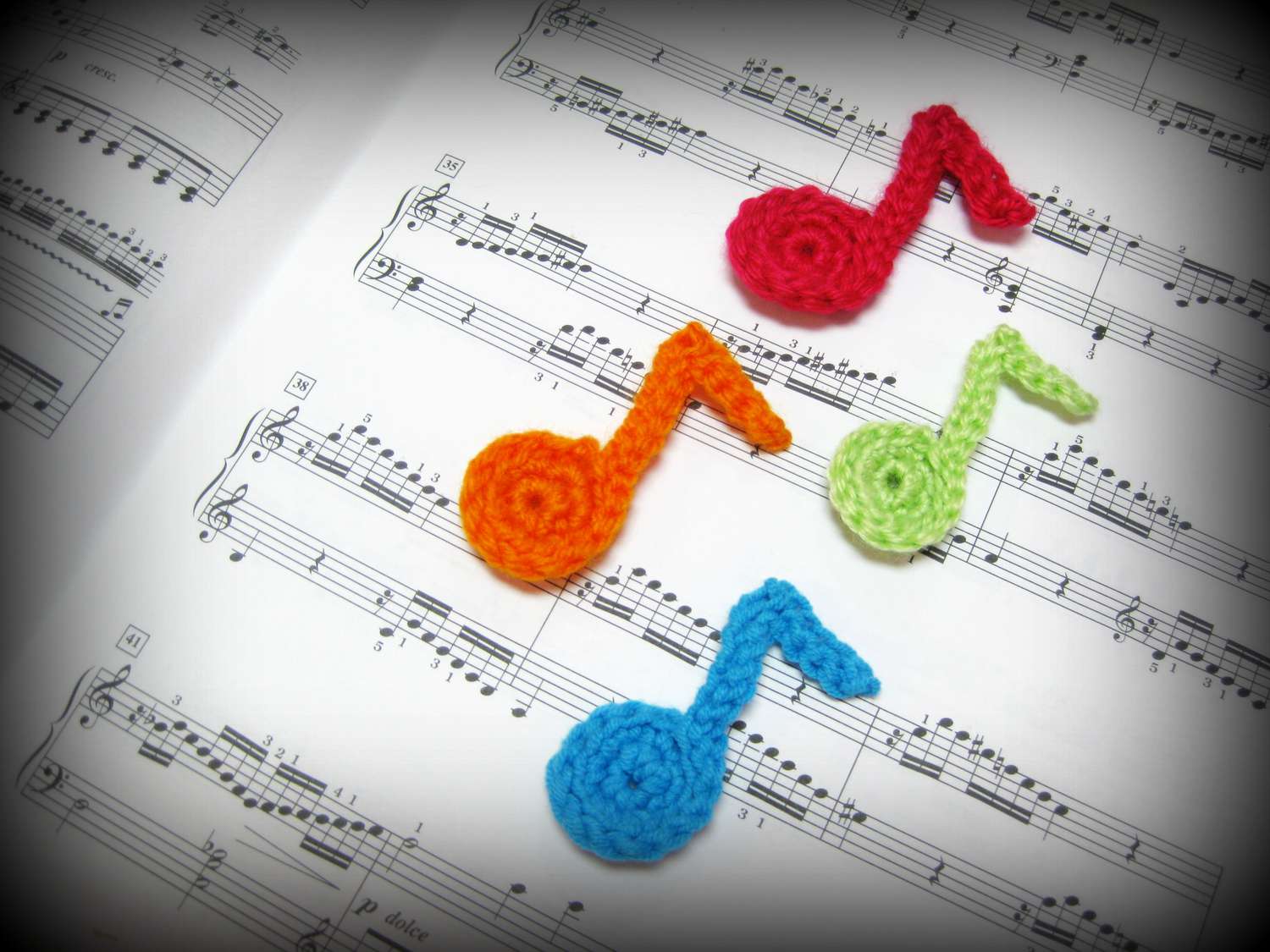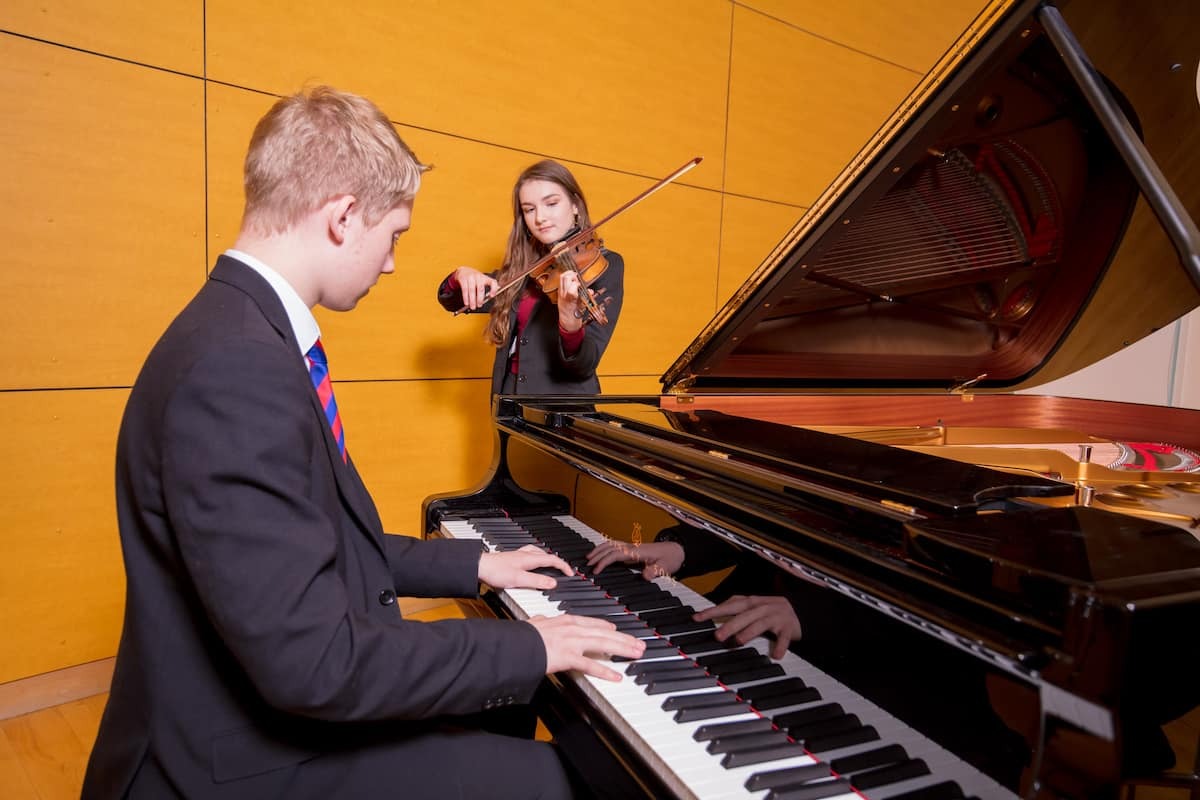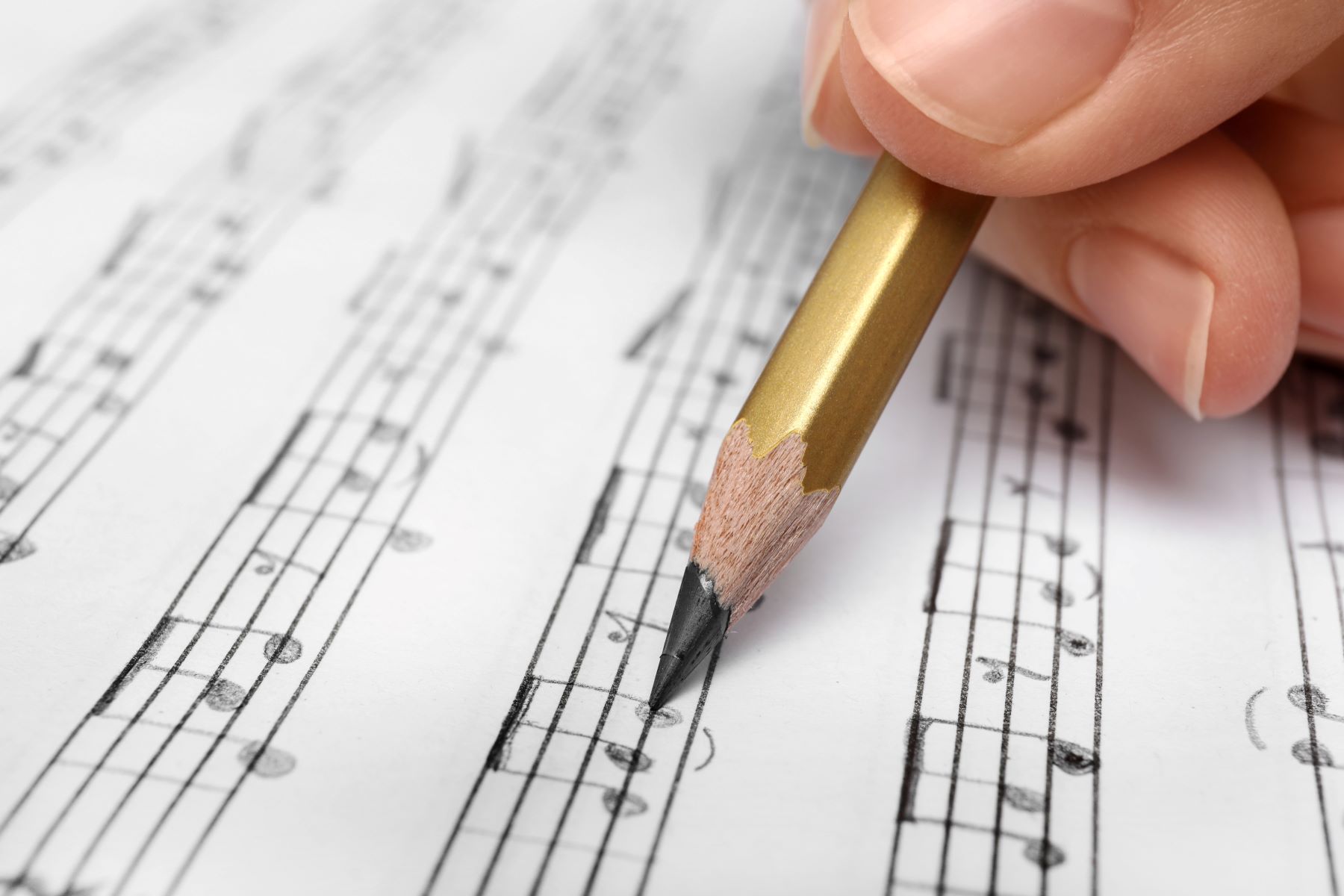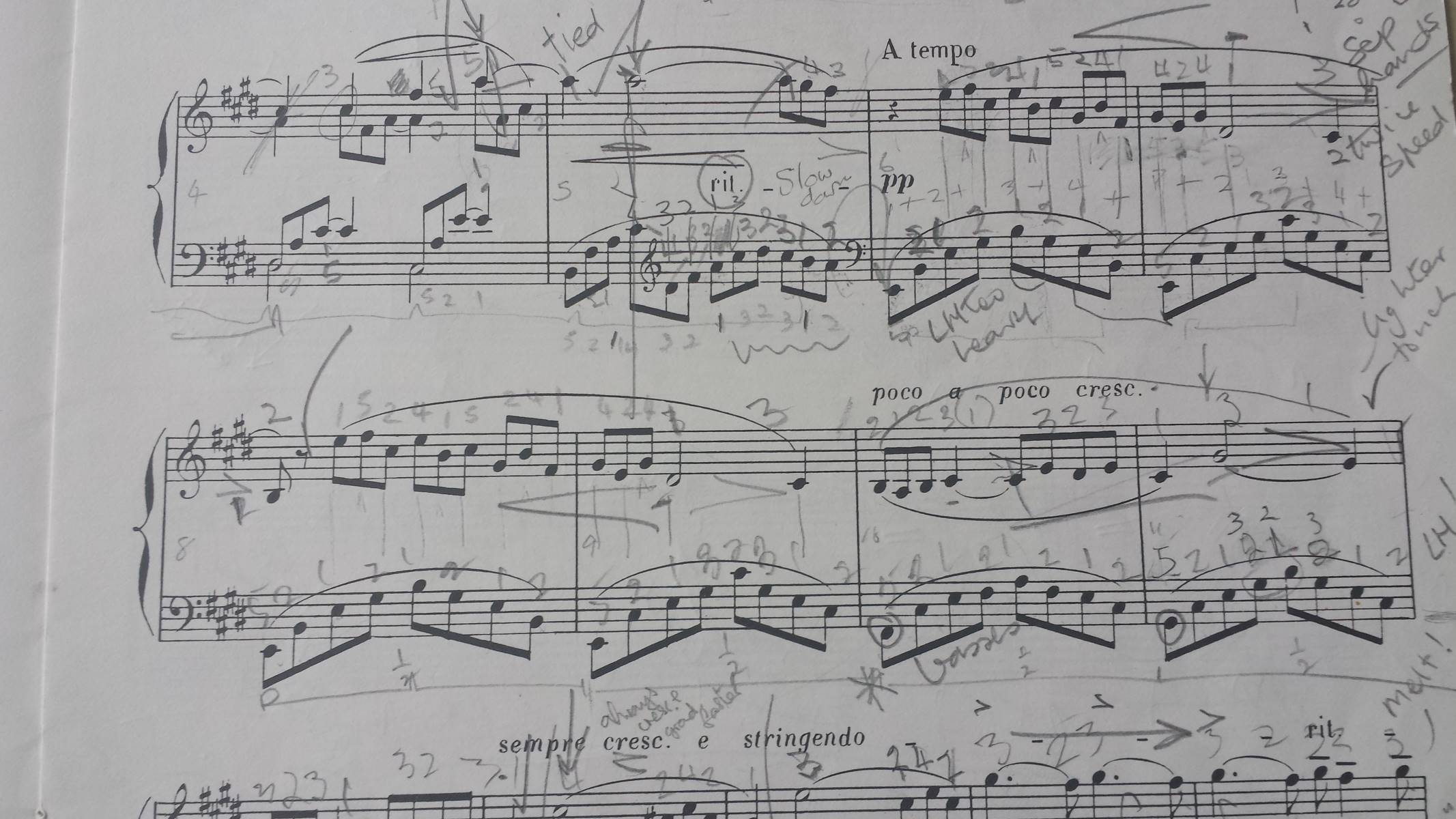Home>Production & Technology>Music Theory>How To Part Write In Music Theory


Music Theory
How To Part Write In Music Theory
Published: January 29, 2024
Learn how to write and part in music theory with our comprehensive guide. Unlock the secrets of music composition and expand your knowledge in music theory.
(Many of the links in this article redirect to a specific reviewed product. Your purchase of these products through affiliate links helps to generate commission for AudioLover.com, at no extra cost. Learn more)
Table of Contents
Introduction
Welcome to the world of music theory! If you’re a musician or aspiring composer, understanding the principles of part writing is essential for creating harmonically rich and melodically pleasing compositions. Part writing, also known as voice leading, refers to the art of combining multiple musical voices to create a cohesive and balanced sound.
Whether you’re writing for a solo instrument, a small ensemble, or a full orchestra, mastering the techniques of part writing can greatly enhance the expressiveness and impact of your music. In this article, we will explore the fundamental principles of part writing, discuss important considerations for both melody and harmony, and provide tips on how to improve your part writing skills.
Part writing is often considered the backbone of music composition, as it establishes the interplay between different musical lines or voices. By understanding the principles of part writing, you’ll be able to create cohesive melodies, enhance harmonies, and ensure smooth voice leading.
Throughout this article, we will delve into the essential elements of part writing, including the rules and guidelines that govern the relationship between melodic lines and the harmonies they create. We will also explore common part writing mistakes and techniques that can help you overcome obstacles and create more compelling musical arrangements.
So, whether you’re a beginner taking your first steps into the world of music theory or a seasoned musician looking to refine your part writing skills, let’s dive in and unravel the secrets of creating beautiful harmonies and captivating melodies through expertly crafted part writing.
Definition of Part Writing
Part writing, also known as voice leading, is the art of composing and organizing multiple musical voices to create harmonically rich and melodically pleasing compositions. It involves the careful arrangement of melodies and harmonies to ensure smooth transitions between notes and chords.
In part writing, each voice or musical line is treated as an individual entity with its own unique characteristics. These voices can be performed by different instruments or sung by different vocalists. The goal of part writing is to create a cohesive and balanced sound by carefully considering the melodic and harmonic interactions between these voices.
Part writing is closely tied to the principles of counterpoint, which is the interaction of two or more melodic lines played or sung simultaneously. Counterpoint emphasizes the independence and integrity of each individual voice while creating a harmonically coherent whole.
When part writing, composers focus on creating melodies that flow seamlessly and harmonies that support and enhance the overall musical structure. Each voice should have a logical and smooth progression from one note to another, avoiding dissonant or awkward intervals that may disrupt the musical flow.
Harmony plays an integral role in part writing. Composers carefully select and arrange chords to create a pleasing and expressive musical experience. The harmonic progression must follow traditional tonal principles, with the voices moving in consonant intervals and resolving dissonances in a satisfying manner.
Part writing is not only relevant for classical music composers. It is also applicable to a wide range of genres, including jazz, pop, and rock. In these genres, part writing techniques are used to create intricate harmonies, catchy melodies, and memorable instrumental arrangements.
By understanding the principles of part writing, composers can effectively convey their musical ideas, express emotions, and create captivating compositions that resonate with listeners. With careful attention to melody, harmony, and voice leading, part writing brings music to life and enhances its overall impact and beauty.
Principles of Part Writing
Part writing is governed by a set of principles and guidelines that ensure the smooth and harmonically pleasing integration of multiple voices. These principles help composers create melodies that flow naturally and harmonies that provide a solid foundation for the music. Here are some key principles of part writing:
- Independence of Voices: Each voice should have its own melodic and rhythmic characteristics, allowing it to stand on its own while still contributing to the overall musical texture. The voices should be distinct yet complement each other harmonically.
- Contrast and Variety: Part writing should incorporate contrast and variety in terms of melodic shape, rhythm, and dynamics. This helps maintain interest and prevents the music from sounding monotonous or repetitive.
- Smooth Voice Leading: The movement of each voice should be smooth and free from awkward jumps or excessive leaps. Smooth voice leading ensures that the music flows naturally and avoids undesirable dissonant intervals.
- Proper Voice Ranges: Careful consideration should be given to the range of each voice to prevent overlapping or overcrowding. Voices should be distributed appropriately across the musical range to create a balanced and well-spaced sound.
- Consonance and Dissonance: Part writing involves a delicate balance between consonance and dissonance. Dissonances should resolve in a satisfying and logical manner, while consonant intervals contribute to a consonant and harmonically pleasing sound.
- Voice Doubling: Doubling refers to the practice of having multiple voices play or sing the same note. Ideally, doubling should occur in consonant intervals and should help strengthen the overall harmonic structure without causing any undesirable sonic effects.
- Observe Harmonic Progression: Part writing should follow traditional harmonic progressions, such as tonic-dominant relationships. Composers must carefully consider chord voicings and voice leading to create smooth harmonic transitions and logical chord progressions.
- Balanced Textures: Part writing should aim for a balanced texture, with each voice having a distinct role and contributing to the overall sonic blend. Textures can range from thin and sparse to rich and full, depending on the intended mood and character of the music.
By adhering to these principles, composers can craft intricate and harmonically rich part writing, creating music that captivates listeners and evokes emotions. Part writing is a skill that requires practice and a deep understanding of musical relationships, but mastering it can greatly enhance the quality and impact of musical compositions.
Melodic Considerations
In part writing, the melody plays a crucial role in creating a memorable and expressive musical experience. When considering melody, composers need to focus on several important aspects to ensure a coherent and pleasing result. Here are some key melodic considerations in part writing:
- Smooth Melodic Motion: The melodic lines should flow smoothly, avoiding large leaps or awkward jumps. Gradual stepwise motion is often preferred, as it creates a sense of natural progression and ease.
- Conjunct and Disjunct Motion: Melodies can consist of conjunct motion (with small intervals between adjacent notes) or disjunct motion (with larger intervals). A combination of both can bring variety and interest to the melodic line.
- Contour and Shape: The contour or shape of the melody contributes to its character and emotional impact. Composers can craft melodies with ascending, descending, arch-like, or wave-like contours to evoke different feelings and moods.
- Repetition and Variation: Repetition and variation of melodic motifs add structure and coherence to the music. Composers can restate or modify melodic phrases to create a sense of familiarity and development throughout the composition.
- Balance and Symmetry: Melodies should have a sense of balance and symmetry, with phrases and sections that complement each other. This helps create a cohesive and satisfying musical experience for the listener.
- Emphasis on the Melody: The melody often serves as the focal point of a musical composition. Composers should ensure that the most important melodic line is clear and prominent, while the accompanying voices provide harmonic support and enhance the melodic expression.
By paying attention to these melodic considerations, composers can create captivating melodies that resonate with listeners. The melody sets the tone of the composition and provides a foundation for the harmonies and overall musical structure. Experimenting with different melodic techniques and exploring various musical styles can further enrich and diversify part writing.
Remember, melody is not limited to just the lead vocal line. Each voice within the part writing arrangement can contribute to the overall melodic fabric of the music. With careful crafting and attention to detail, composers can create intricate and compelling melodies that engage the listener and evoke emotion.
Harmonic Considerations
In part writing, harmonies provide the foundation for the overall musical sound and support the melodic lines. Harmonic considerations are crucial for creating a coherent and pleasing musical composition. Here are some key aspects to consider when dealing with harmony in part writing:
- Chord Progressions: When constructing harmonies, composers need to carefully choose and arrange chords in a way that creates a logical and satisfying progression. The movement from one chord to another should follow traditional tonal principles and provide a sense of resolution and tension.
- Voice Leading: Voice leading refers to the smooth transition of each voice from one note to the next. When harmonizing melodies, composers must ensure that the individual voices move in stepwise or small interval motion, minimizing large jumps or awkward leaps.
- Tonal Centers: Establishing and maintaining a tonal center is essential for creating a coherent harmonic framework. Composers typically choose a tonic key or a specific chord progression to anchor the harmonies and provide a sense of tonal stability.
- Chord Voicings: The arrangement of the individual notes within a chord, known as chord voicing, can greatly impact the overall sound and character of the harmony. Composers need to consider the spacing and range of the voices to create a balanced and sonically pleasing blend.
- Consonance and Dissonance: Harmonic choices involve balancing consonant and dissonant intervals. Consonant intervals provide stability and a sense of resolution, while dissonant intervals create tension. Skillful use of dissonance and its subsequent resolution adds depth and emotional impact to the music.
- Seventh Chords and Extensions: Adding seventh chords and extensions to the harmonies can introduce richness and complexity. Composers can explore using dominant seventh chords, diminished seventh chords, or extended chords to enhance the harmonic palette and create unique tonal colors.
- Modulations and Key Changes: Modulations and key changes are effective ways to introduce variation and create interest in a composition. Composers can explore transitioning to different key centers to evoke different moods or to navigate through different sections of the music.
By understanding and applying harmonic considerations, composers can craft harmonically rich and tonally satisfying compositions. The careful selection and arrangement of chords, attention to voice leading, and skillful use of consonance and dissonance contribute to the overall depth and impact of the music.
It is important to note that harmonic considerations are not limited to classical or traditional tonal music. They can be applied to various musical genres, including jazz, pop, and rock, helping to create unique and captivating harmonic progressions and textures.
Experimenting with different harmonic choices and exploring the possibilities within part writing can open up a world of creativity and expression. By employing harmonic considerations effectively, composers can create harmonies that elevate their compositions and engage the listener on a deeper level.
Voice Leading Rules
Voice leading rules are guidelines that govern the movement of individual voices within a part writing arrangement. These rules ensure smooth transitions between notes and harmonies, resulting in a coherent and pleasing musical texture. Here are some essential voice leading rules to consider:
- Avoid Parallel Fifths and Octaves: Parallel fifths and octaves occur when two voices move in the same interval, creating a parallel motion and causing a loss of independence between the voices. To maintain clarity and harmonic integrity, composers should avoid writing successive fifths and octaves.
- Prefer Contrary Motion: Contrary motion refers to the movement of voices in opposite directions. This creates a pleasing and interesting harmonic effect, allowing the individual voices to maintain their independence while still interacting with one another.
- Resolve Dissonances Properly: Dissonant intervals, such as seconds, sevenths, and suspensions, should be properly resolved to consonant intervals. Composers need to ensure that the voice containing the dissonance resolves in a stepwise motion, creating a smooth and satisfying resolution.
- Avoid Voice Crossings: Voice crossings occur when one voice crosses over or intersects with another voice, disrupting the natural flow of the musical lines. Composers should strive to keep the voices properly spaced and avoid instances where one voice jumps above or below another.
- Use Similar Motion with Care: Similar motion refers to when two voices move in the same direction by the same interval. While similar motion can be used for emphasis or creating a particular effect, excessive use can lead to a lack of independence between voices. Its use should be deliberate and sparing.
- Avoid Hidden Octaves and Fifths: Hidden octaves and fifths occur when the perfect fifths or octaves are reached by similar motion or in an inner voice. Although subtle, they can still create a sense of harmonic instability and should be avoided in part writing.
- Observe Voice Range: Each voice should be written within an appropriate range to avoid extreme high or low notes that may strain or clash with other voices. Consider the capabilities and limitations of the instruments or vocal ranges involved when assigning notes to the different voices.
These voice leading rules are not strict “laws,” but rather general guidelines that help composers maintain smooth and harmonically pleasing part writing. They provide a framework for creating balanced and independent voices that work together to create a cohesive musical composition.
It’s worth noting that while adherence to these rules is important, there are instances where composers may intentionally choose to break certain voice leading conventions for expressive purposes. As with any creative endeavor, there is room for experimentation and pushing the boundaries of traditional conventions.
By understanding and applying voice leading rules, composers can ensure that their part writing is structurally sound and harmonically compelling, resulting in music that engages and captivates listeners.
Common Part Writing Mistakes
While part writing is a nuanced and complex skill, there are common mistakes that composers, particularly those new to the craft, may make. By being aware of these mistakes, musicians can avoid common pitfalls and improve the quality of their part writing. Here are some of the most common part writing mistakes:
- Poor Voice Leading: One of the most prevalent mistakes in part writing is inadequate voice leading. This includes awkward leaps between notes, voice crossings, parallel fifths or octaves, or unresolved dissonances. These errors can result in a lack of clarity, harmonic instability, and a disjointed musical texture.
- Lack of Independence: Part writing should emphasize the independence of each voice while still contributing to a harmonically coherent whole. Neglecting this can result in a homogenous and monotonous sound. Each voice should have its unique melodic and rhythmic characteristics to create a balanced and engaging musical texture.
- Overcrowded Ranges: Failing to distribute voices appropriately across the musical range can lead to overcrowding and a muddled sound. It’s important to consider the capabilities and limitations of the instruments or vocalists involved and ensure that each voice is written within its suitable range.
- Harmonic Inconsistencies: In part writing, maintaining a consistent harmonic language is crucial. Inconsistent or illogical chord progressions can disrupt the overall harmonic structure and confuse the listener. Composers should carefully plan the harmonic journey and establish a clear tonal center or key.
- Poor Balance and Texture: Part writing should strive for a balanced texture, where each voice has a distinct role and contributes to the overall blend. Neglecting balance can result in overpowering or weak voices, detracting from the intended musical impact.
- Ignoring Melodic Considerations: Neglecting melody in favor of focusing solely on harmony can lead to lackluster part writing. Melody is a crucial element that engages listeners. Failing to craft compelling melodic lines can result in music that feels uninspiring or forgettable.
It’s important for composers to be mindful of these common part writing mistakes and continuously strive for improvement. Developing a keen sense of ear training and studying the works of established composers can help in avoiding these pitfalls and creating more refined and engaging musical compositions.
Remember, part writing is a skill that takes time and practice to master. By being attentive to potential mistakes and seeking feedback from experienced musicians or mentors, composers can refine their part writing and create music that truly resonates with listeners.
Techniques to Improve Part Writing
Improving part writing skills requires practice, patience, and a keen ear for musical detail. By incorporating various techniques and approaches, composers can enhance their part writing and create more compelling and harmonically rich compositions. Here are some techniques to consider:
- Study and Analyze Existing Works: Analyzing the part writing in compositions by renowned composers can provide valuable insights into effective techniques and approaches. Study the works of classical composers like Bach, Mozart, and Beethoven, as well as those from other genres that incorporate intricate part writing.
- Practice Voice Leading Exercises: Regularly engaging in voice leading exercises helps train the ear and develop a strong understanding of melodic and harmonic connections. Work on writing different melodic lines and experiment with various harmonic progressions to improve overall part writing skills.
- Experiment with Different Textures: Explore various textures, ranging from homophonic (with one voice carrying the melody and others providing accompaniment) to contrapuntal (with each voice having independent melodies). Experimentation with texture helps develop versatility and creative expression in part writing.
- Pay Attention to Instrumentation: Consider the specific characteristics and limitations of the instruments being used in the part writing arrangement. Different instruments have unique timbres and ranges that need to be taken into account to ensure effective and idiomatic writing.
- Listen Intently: Train your ear to listen attentively to the interaction of different voices. Pay attention to how melodies and harmonies move, how they create tension and resolution, and how they contribute to the overall musical texture. Active listening can greatly improve your understanding of part writing.
- Study Music Theory: Deepen your knowledge of music theory concepts relevant to part writing, such as chord progressions, cadences, and harmonic functions. Understanding these concepts provides a solid foundation for effective part writing.
- Seek Feedback: Share your part writing compositions with fellow musicians, instructors, or other composers to receive constructive feedback. Evaluating your work from different perspectives and learning from others’ experiences can help you identify areas for improvement and refine your part writing skills.
- Experiment and Take Risks: Part writing is an artistic endeavor, so don’t be afraid to take risks and explore new ideas. Embrace creative experimentation and push the boundaries of traditional conventions – this can lead to innovative and exciting part writing compositions.
Remember that improving part writing skills is a continual process. It takes time, dedication, and a willingness to learn and adapt. By incorporating these techniques into your practice routine, you’ll develop a stronger command of part writing and be able to create music that is harmonically rich, melodically captivating, and emotionally resonant.
Conclusion
Part writing is a fundamental skill in music theory that allows composers to create harmonically rich and melodically compelling compositions. By understanding the principles of part writing, considering melodic and harmonic aspects, and following voice leading rules, composers can craft music that engages listeners and evokes emotions.
Throughout this article, we’ve explored the definition of part writing and its importance in creating balanced and cohesive musical textures. We’ve discussed the principles of part writing, including melodic considerations such as smooth motion, contour, and variation, as well as harmonic considerations such as chord progressions, voice leading, and consonance versus dissonance.
We’ve also touched upon common mistakes in part writing, such as poor voice leading, lack of independence, overcrowded ranges, and harmonic inconsistencies. Recognizing and understanding these mistakes is essential in improving part writing skills and creating more polished and effective musical compositions.
To enhance part writing abilities, we’ve discussed techniques such as studying existing works, practicing voice leading exercises, experimenting with different textures, considering instrumentation, active listening, studying music theory, seeking feedback, and embracing creativity.
As with any artistic skill, improving part writing requires practice, patience, and a commitment to continuous learning. By incorporating these techniques, composers can refine their part writing skills, create harmonically pleasing compositions, and compose music that resonates with audiences.
So, whether you’re a beginner delving into music theory or an experienced composer looking to enhance your part writing expertise, embrace these principles, techniques, and considerations. Let your creativity soar as you navigate the intricate interplay of melodies and harmonies, and craft captivating musical arrangements that inspire and move others.











